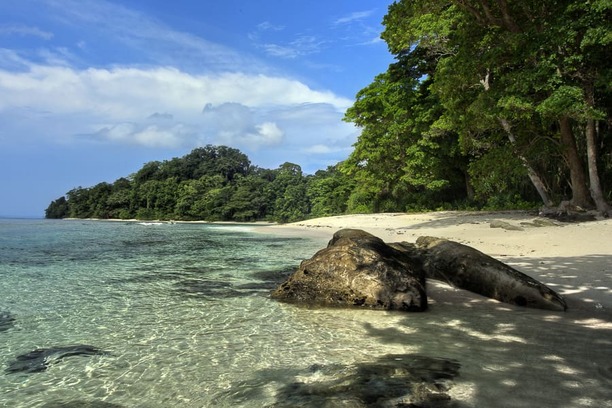
Cultural Side of Andaman: Tribes, Museums & Historical Stories You Should Know
The Andaman Islands are often celebrated for their turquoise waters and tropical beaches — but beneath the waves and palms lies a rich and fascinating cultural history. From ancient tribes that have lived in isolation for thousands of years to remnants of British colonial rule, Andaman’s cultural heritage is as compelling as its natural beauty.
Whether you’re a history buff, an anthropology enthusiast, or a curious traveler, this guide uncovers the cultural side of Andaman — including indigenous tribes, must-visit museums, and stories that shaped the islands.
🧬 The Indigenous Tribes of Andaman
The Andaman and Nicobar Islands are home to some of the world’s oldest surviving tribal communities. These tribes are an essential part of the region’s identity and are protected under strict government laws to preserve their way of life.
1. Great Andamanese Tribe
- Once a large population, now limited in numbers
- Resettled on Strait Island under government care
- Known for hunting, gathering, and fishing traditions
2. Jarwa Tribe
- Semi-nomadic and known to inhabit the forests of South and Middle Andaman
- Strictly isolated from outsiders to preserve their culture
- Occasionally spotted along the Andaman Trunk Road, but photography and contact are prohibited
3. Sentinelese Tribe
- Inhabit North Sentinel Island
- Completely isolated and fiercely protective of their land
- No outsider contact is permitted; approaching the island is banned
4. Onges and Shompens (Nicobar region)
- Less known but culturally rich groups
- Engage in fishing, forest gathering, and traditional craftsmanship
⚠️ Important: Respect tribal protections and avoid tours or guides that offer “tribal sightings.” These communities are not tourist attractions and must be respected.
🏛️ Must-Visit Museums in Andaman
To better understand these tribes and the islands’ history, Port Blair offers several engaging museums that bring Andaman’s culture to life.
1. Anthropological Museum (Port Blair)
- Offers insights into the lives of all six major tribes
- Displays include tribal tools, weapons, clothes, photographs, and models
- Best place to learn about indigenous customs without intrusion
🕘 Timing: 9:00 AM – 1:00 PM & 1:30 PM – 4:30 PM (Closed on Mondays)
2. Cellular Jail National Memorial
- A chilling reminder of India’s freedom struggle
- Housed hundreds of freedom fighters during British rule
- The Light & Sound Show recreates the stories of sacrifice and resistance
🎫 Entry: ₹30 (Show: Extra ₹150–₹200)
📍 Must-visit for understanding the colonial impact on Andaman
3. Samudrika Naval Marine Museum
- Managed by the Indian Navy
- Combines marine life exhibits with cultural history
- Displays models of tribal dwellings and historical narratives
4. Forest Museum (Chatham Island)
- Offers a glimpse into Andaman’s timber and forest heritage
- Contains wood carvings, forest products, and tribal artifacts
📖 Historical Highlights You Should Know
🔗 British Colonial Era & The ‘Kala Pani’
- The Cellular Jail, often called “Kala Pani,” symbolizes the pain endured by political prisoners
- Andaman was a penal colony for exiled revolutionaries during the 19th century
- Many inmates were freedom fighters who played key roles in India’s independence
🏴 Japanese Occupation (1942–1945)
- During WWII, Andaman was occupied by Japanese forces
- Subhas Chandra Bose visited Port Blair and hoisted the Indian flag, declaring it free from British rule
⚓ Naval and Strategic Importance
- The islands have long served as a key naval outpost for India
- Modern-day Port Blair reflects this with a strong military presence and strategic facilities
🗺️ Recommended Cultural Itinerary (2–3 Days)
Day 1:
- Visit Cellular Jail & attend Light & Sound Show
- Explore the Anthropological Museum
- Stroll through Aberdeen Bazaar for local culture
Day 2:
- Visit Samudrika Museum & Chatham Saw Mill
- Take a heritage walk around Ross Island (British ruins)
Day 3 (Optional):
- Attend tribal cultural exhibitions (when organized)
- Explore Forest Museum and local crafts shops
🧭 Responsible Cultural Tourism Tips
- Do not attempt to visit tribal reserves or take unauthorized photos
- Respect local customs and religious practices
- Buy local handicrafts and support indigenous artisans
- Engage local guides trained in ethical tourism
Final Thoughts
Andaman’s story goes far beyond its sun-kissed beaches. Its tribes, museums, and historical landmarks offer a deeper, more human connection to these islands. For those willing to look beyond the scenic landscapes, Andaman reveals a world of resilience, heritage, and untold stories.
Want to explore the cultural side of Andaman?
We offer heritage-focused itineraries, museum tours, and ethical cultural experiences. Let us help you design a meaningful Andaman journey!
